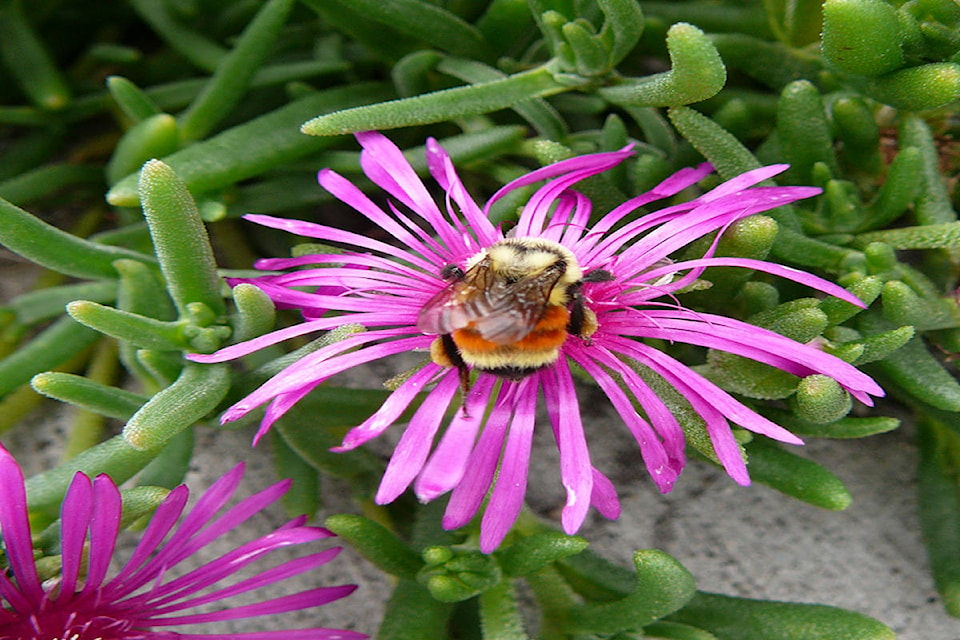After a cool, wet spring and unprecedented floods, summer weather arrived suddenly with extreme heat and drought.
I find it hard to adjust to the sudden change and so do many plants.
Plants have grown bigger than normal, just as they do with over-watering.
The lush growth makes them more water-thirsty and vulnerable in the sudden change to hot weather.
Here are some tips to help your plants:
1) Weed thoroughly. Weeds compete with plants for moisture.
Put any weeds that have flowered or have invasive roots into the green bin (e.g. quack grass and morning glory weed). Your home compost doesn’t get hot enough to kill these.
Note: Keep you home compost moist so it will rot.
2) If you have garden areas that aren’t mulched, do that now.
First remove all weeds. Next soak the ground really well then spread the mulch material.
This can be any organic matter. Some examples: Glengrow (city yard waste compost available at the Glenmore landfill and from some nurseries), your own compost, rotted leaves, and straw.
The mulch will retain moisture, greatly reduce weed growth and prevent a hard crust forming on the soil surface, making it much easier to pull any weeds that do grow.
3) To avoid loss due to evaporation, only water when the air is cool – i.e. two to three hours before and after dawn.
It’s best to water for longer, less often so the ground gets a good soak.
Short frequent watering only wets the soil surface which will dry out quickly.
It also encourages drought-vulnerable, shallow root systems.
4) If you have annuals or perennials that persistently wilt, trim them back so they don’t need so much water and have a better chance to recover.
5) Cut back plants that have finished blooming to allow them to flush out new growth. Some species like Nepeta (catnip) will re-bloom.
•••
Join OXA Program Director, Eva Antonijevic , for a free presentation on Tuesday, July 18, from 7 to 8 p.m., in the unH2O Xeriscape Demonstration Garden, 4075 Gordon Dr. in front of the H2O Aquatic Centre.
Eva will lead you through the garden discussing the creation of the garden beds eight years ago and touching on the underlying principles of xeriscaping.
She will point out pollinator friendly plants and introduce you to some of the Okanagan’s best-known solitary bees.
As climate change continues, creating climate resilient landscapes is increasingly important.
Learn how to landscape with nature, so our gardens can perform double duty, not only beautifying our homes but also cleaning our storm water, providing food for pollinators, and contributing to the Okanagan’s genetic biodiversity; all while using minimal water and no chemicals.
Eva will focus on appropriate water-wise plants we can grow in this valley.
Gwen Steele is executive director of the non-profit Okanagan Xeriscape Association. Learn more about Gardening with Nature and plants for the Okanagan on the website at www.okanaganxeriscape.org.
